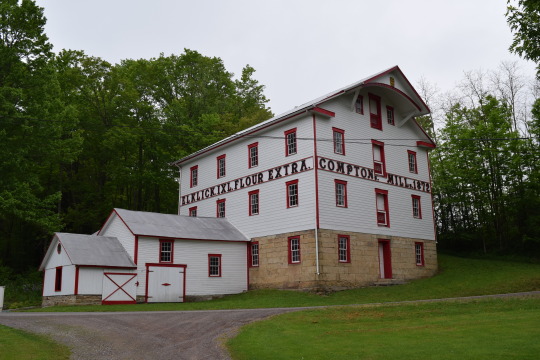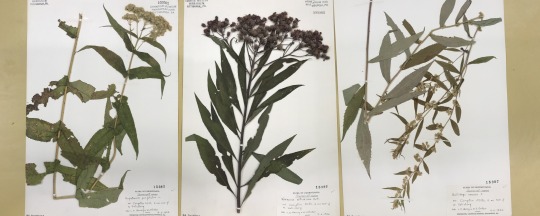by Mason Heberling
September 6, 1952: 66 years ago
…and recollected September 6, 2018
These specimens (and more) were collected on September 6, 1952 near Compton’s Mills (near Salisbury, PA, Somerset County) by Leroy Henry and Werner Buker. Henry was a long time Curator of Botany at the museum (1937-1973), and Buker was a math teacher at Perry High School, who was also a very active botanist at the museum. Collectively, they collected nearly 50,000 specimens in the Carnegie Museum herbarium!
These specimens are part of a larger project ongoing in the Section of Botany at the Carnegie Museum. Starting last year, we are revisiting historic sites across Western Pennsylvania, where former botanists have collected. We are revisiting these sites in order to record and monitor biological change in the Anthropocene. Are the same species present? (local extinction or persistence) Are new species present? (newly introduced invasive species)
We are also recollecting specimens from these historic sites to compare specimens collected decades to a century ago, to those collected today. For example, how are species affected by climate change? Are species flowering earlier? How are plant communities affected by invasive species and introduced pests? These are just a few of the many questions that can be answered.

With generous permission of the current landowner, we are able to recollect specimens at Compton’s Mills. Compton’s Mills is a site of a family-run historic grist/flour mill built in 1872 on the foundation of an even earlier mill. We have done some recollections at this site last spring, including specimens of the endemic Appalachian violet (Viola appalachiensis). Compton’s Mills is also of special importance, as specimens collected from this site were used by Leroy Henry to formally describe species new to science (known as “type” specimens). Read about our recollection in Spring 2017.
This year we are revisiting in the late summer/early fall.
With data from Compton’s Mills, in addition to repeatedly revisiting other sites across Western Pennsylvania, we will be able to document and understand a century of past, present, and future impacts of humans on the landscape– a hallmark of the Anthropocene. Some of our first recollections were featured in the We Are Nature exhibition. Although this exhibition recently ended, specimens from this project will remain on display in the Hall of Botany.

The wildflower specimens pictured here are welcomed signs of late summer and fall (left to right): common boneset (Eupatorium perfoliatum), tall ironweed (Vernonia altissima), wreath goldenrod (Solidago caesia).
Mason Heberling is a Postdoctoral Research Fellow in the Section of Botany at the Carnegie Museum of Natural History. Museum employees are encouraged to blog about their unique experiences working at the museum.
